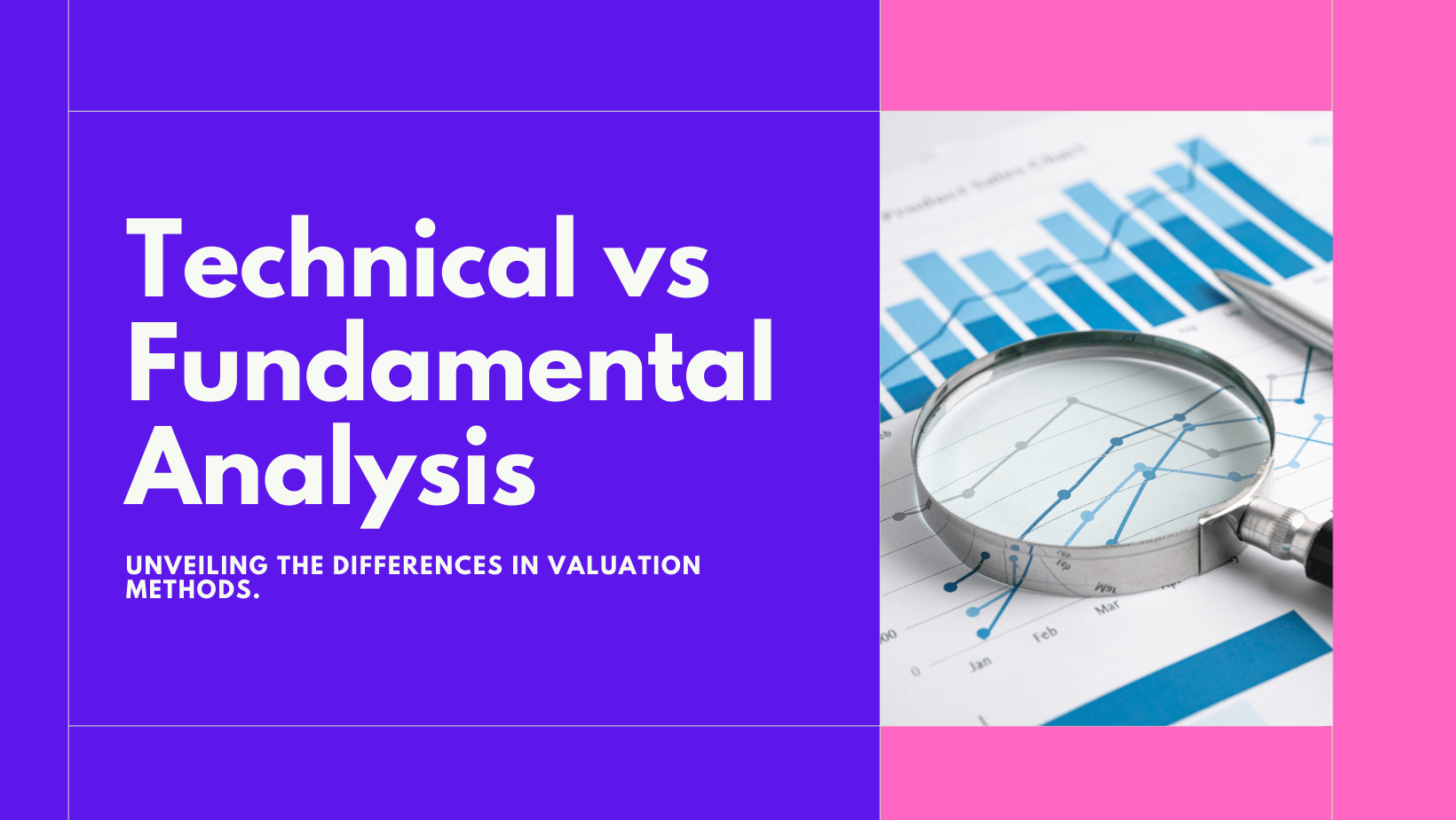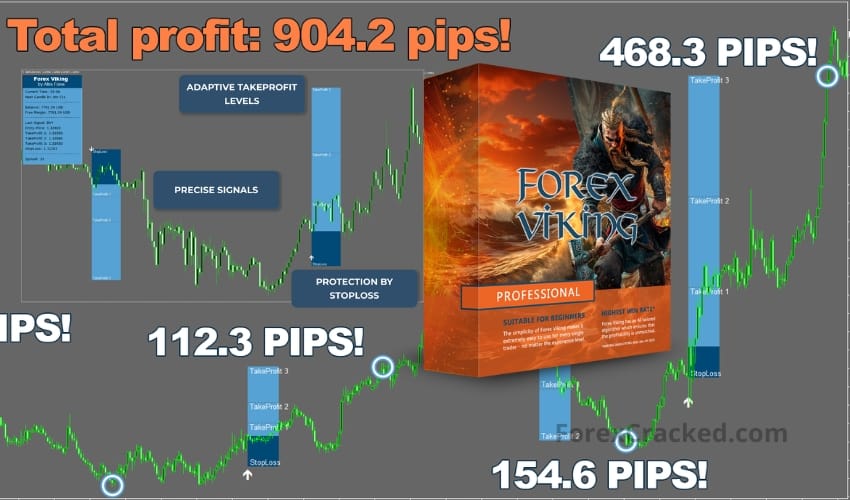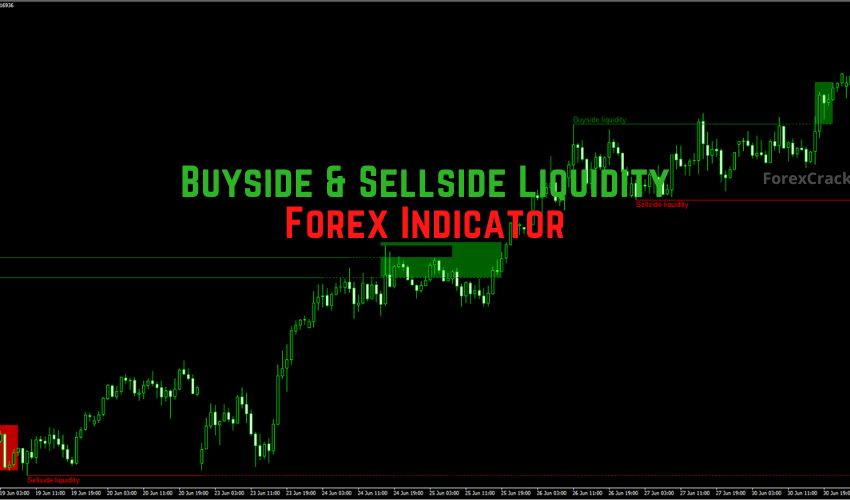In the last few articles, we covered the basics of forex trading, like prices, brokers, and terminologies. Now, let’s dive into the exciting part of forex where we figure out where currencies should be trading. In this article, we’ll discuss technical analysis vs fundamental analysis, what they are, and when and how to use them.
Now, you’ve got two methods to valuate a currency: one’s technical analysis, and the other is called fundamental analysis.
What is Technical Analysis?

Technical analysis involves studying past market data, primarily price and volume, to forecast future price movements. It operates on the premise that historical price patterns tend to repeat themselves due to market psychology and investor behavior.
When you’re checking out a chart, that’s technical analysis because you’re looking at prices and volume to guess which way the price will move.
You employ technical analysis to systematically locate entry and exit points with high probability, aiming to make profits in this market.
Technical analysts use different tools and techniques, including charts, indicators, and patterns, to identify trends and trading opportunities.
Charts:
Charts serve as the cornerstone of technical analysis. They visually represent price movements over time, allowing traders to identify patterns, trends, and support/resistance levels. Common chart types include line charts, bar charts, and candlestick charts, each offering distinct insights into price action.
Indicators:
Indicators are basically mathematical calculations based on price or price and volume.
Technical analysts employ a wide array of indicators to analyze market trends and gauge potential entry and exit points. These indicators encompass oscillators (e.g., RSI, Stochastic), moving averages (e.g., SMA, EMA), and trend-following tools (e.g., MACD, ADX). By interpreting these indicators, traders aim to spot favorable trading opportunities and anticipate trend reversals.
Patterns:
Chart patterns, such as head and shoulders, triangles, and flags, provide valuable insights into market sentiment and potential price movements. Technical analysts meticulously analyze these patterns to identify trend continuations or reversals, thereby making informed trading decisions.
What is Fundamental Analysis?
So, what’s fundamental analysis? In easy words, everything apart from technical analysis is fundamental analysis. Anything not related to price and volume belongs to fundamental analysis.
Fundamental analysis, focuses on evaluating the intrinsic value of currencies by analyzing economic, geopolitical, and macroeconomic factors. Unlike technical analysis, which relies on historical price data, fundamental analysis examines the underlying forces driving currency movements.
You can check out politics, interest rates, employment rates, GDP, printing money—anything that’s not about price and volume could be fundamental analysis. So, you’re examining fundamental factors that affect the supply and demand for a particular currency.
Here are the most important ones that most analysts use:
Economic Indicators:
Fundamental analysts closely monitor key economic indicators, including GDP growth rates, inflation, employment figures, and central bank policies. These indicators offer insights into a country’s economic health and monetary policy stance, thereby influencing its currency’s value in the Forex market.
Geopolitical Events:
Geopolitical events, such as elections, trade agreements, and geopolitical tensions, can significantly impact currency valuations. Fundamental analysts assess the geopolitical landscape to anticipate potential market disruptions and adjust their trading strategies accordingly.
Interest Rates and Monetary Policy:
Central bank decisions regarding interest rates and monetary policy play a pivotal role in shaping currency movements. Fundamental analysts analyze central bank statements, meeting minutes, and economic forecasts to gauge future monetary policy trajectories and their potential impact on exchange rates.
Technical Analysis vs Fundamental Analysis

While both technical and fundamental analysis aim to predict future price movements, they differ in their methodologies and underlying principles.
Technical analysis relies on historical price data and market psychology to forecast future trends, while fundamental analysis examines economic, geopolitical, and macroeconomic factors driving currency valuations.
Technical analysis is more suited for short to medium-term trading strategies, focusing on identifying precise entry and exit points based on chart patterns and indicators. In contrast, fundamental analysis provides a broader perspective on long-term currency trends, considering fundamental factors shaping a country’s economic outlook.
Technical analysis is criticized for its subjectivity and reliance on historical data, which may not always accurately reflect future market dynamics. Conversely, fundamental analysis faces challenges in accurately quantifying the impact of geopolitical events and central bank policies on currency valuations.
So, which one should you use? well both. let me explain.
Imagine there are two people: one is a newly married guy searching for a house to settle down with his wife and start a family, while the other is a real estate agent whose job is to buy and flip houses for quick profits. Now, how do you think they’ll evaluate the house? Do they both do it the same way?
The first guy, planning to make this house his long-term home, will focus on crucial aspects like the foundation, insulation, plumbing—essentially, he wants to ensure the house meets his needs and will last. He’s not overly concerned about the cost in that neighborhood and is willing to pay a bit more for a quality house.
On the other hand, the real estate agent cares less about the house’s fundamentals and more about the prices of similar houses in the area and how much profit he can make by flipping it quickly. He’s primarily interested in the buying and selling process for fast gains. However, he won’t completely ignore the house’s fundamentals because if he invests in a structurally unsound house, he risks losing his investment.
From this scenario, we understand that if you’re looking for something to hold onto for a long time, focusing on its fundamentals is crucial. Conversely, if you’re aiming for a quick trade, fundamentals matter less; it’s the price of the house that counts.
It’s the same in trading. If you’re into short-term trading, fundamentals matter less. But if you’re more of an investor, you should focus on fundamentals and overlook technicals. However, remember that fundamental analysis holds more weight than technical analysis. Any shifts in fundamentals can overshadow any technical analysis you’ve done. That’s why even short-term traders need to stay aware of what’s happening with the asset they’re trading.
As traders, we give priority to technicals but also study fundamentals. This way, when there’s a change in fundamentals, we understand how it might impact the price and supply and demand. By doing this, we safeguard our trading capital or even find good trading opportunities as well.
Conclusion
In conclusion, both technical and fundamental analysis offer valuable insights into Forex trading, each with its strengths and limitations. While technical analysis provides traders with tools to analyze price movements and identify short-term trading opportunities, fundamental analysis offers a broader perspective on long-term currency trends driven by economic fundamentals and geopolitical factors. Ultimately, successful Forex traders often integrate aspects of both methodologies to make well-informed trading decisions in a dynamic and ever-changing market environment.







